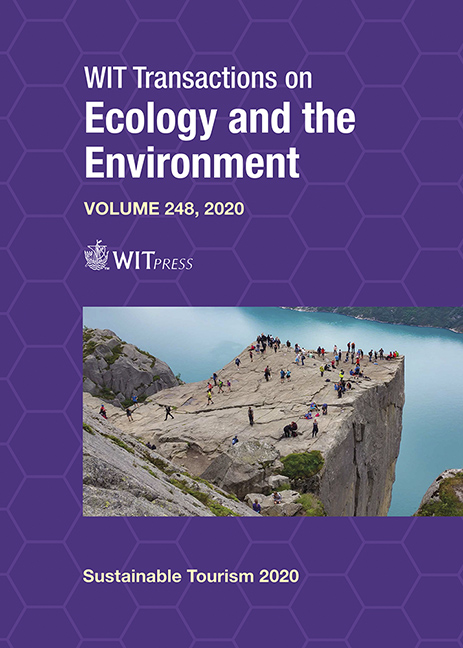LOCAL ACTIVE ENGAGEMENT AS AN EFFECTIVE TOOL FOR SUSTAINABLE TOURISM DEVELOPMENT: FIRST CONSIDERATIONS FROM THE EUROPEAN CULTURAL ROUTES CASE
Price
Free (open access)
Transaction
Volume
248
Pages
12
Page Range
1 - 12
Published
2020
Paper DOI
10.2495/ST200011
Copyright
WIT Press
Author(s)
SABRINA MENEGHELLO, ERICA MINGOTTO
Abstract
Over the last decade, Cultural Routes (CR) of the Council of Europe (CoE) have flourished as an interesting example of cultural tourism, proposing thematic a mix of natural and cultural heritage and facilitating outdoor ways to experience sustainable tourism practices. The European programme states the importance of partnering among private and public stakeholders in defining and managing the Route as a sustainable tourism product; in fact, most of the studies on CR examine their state of development and future strategies, starting from these partnerships and their ability to reach this goal. Recently, some scholars have been investigating CR capability in creating new models of participation in heritage with shifting interest in different players, i.e. local communities and tourists turning from passive recipients to engaged actors. The paper aims to further investigate the specific role of these actors in CR tourism processes and resulting social impacts. It represents a preliminary investigation originating from the findings of a pilot study commissioned in 2016 by the European Institute of Cultural Routes (EICR), aimed at developing a measurement and quality control tool to ensure sustainability of CR, starting from a group of seven selected CR. In particular, this study investigates those findings, focusing mainly on the contribution of communities and tourists in tourism processes. Additional surveys and semistructured interviews with CR managers have been conducted to better identify forms of participation in decisions, product design, and tourism practices. Considerations about engagement effectiveness in relation to typology of actors, interactions, and specific phases of the management process, as well as observed social benefits, are among the key findings.
Keywords
sustainable tourism, European cultural routes, local engagement, social benefits





